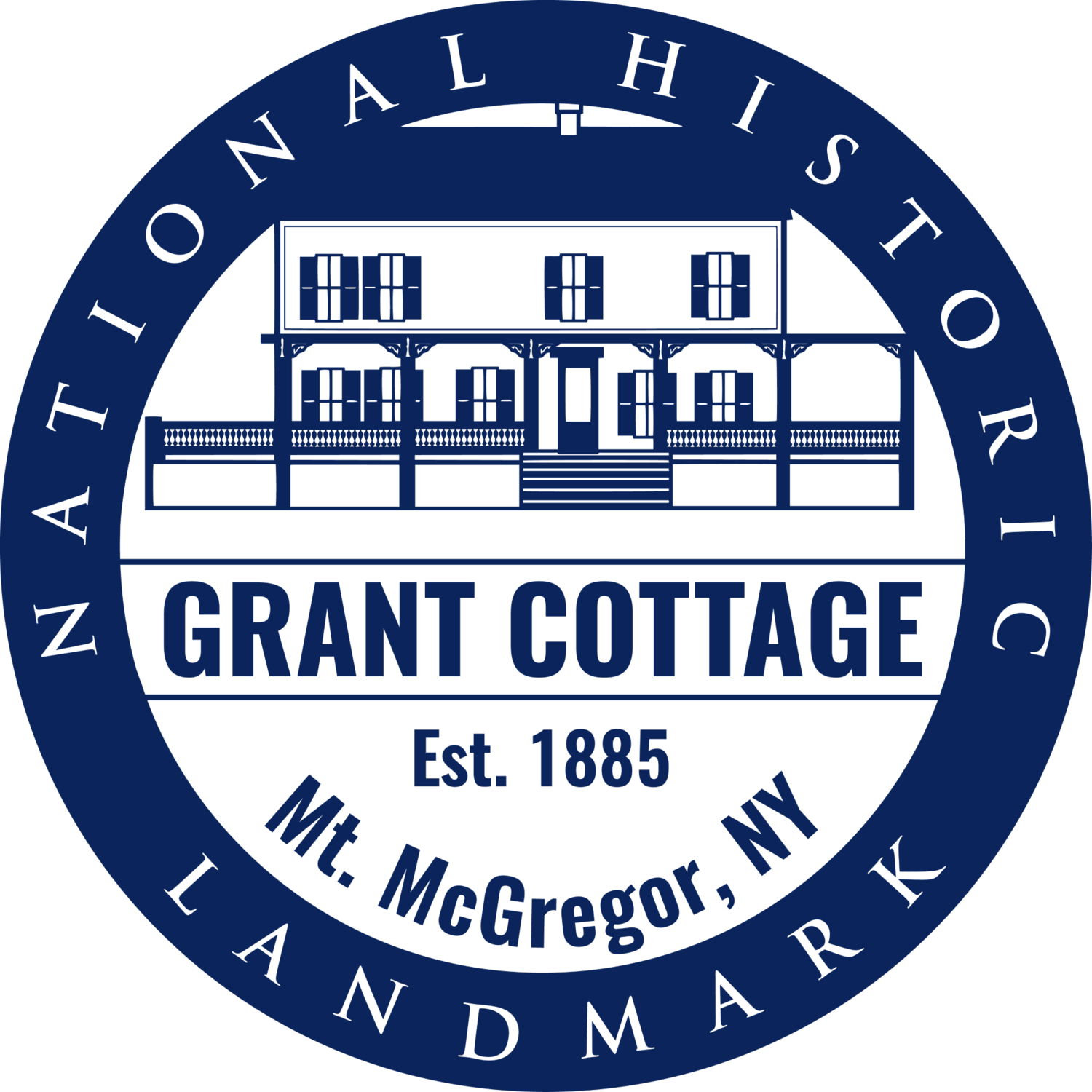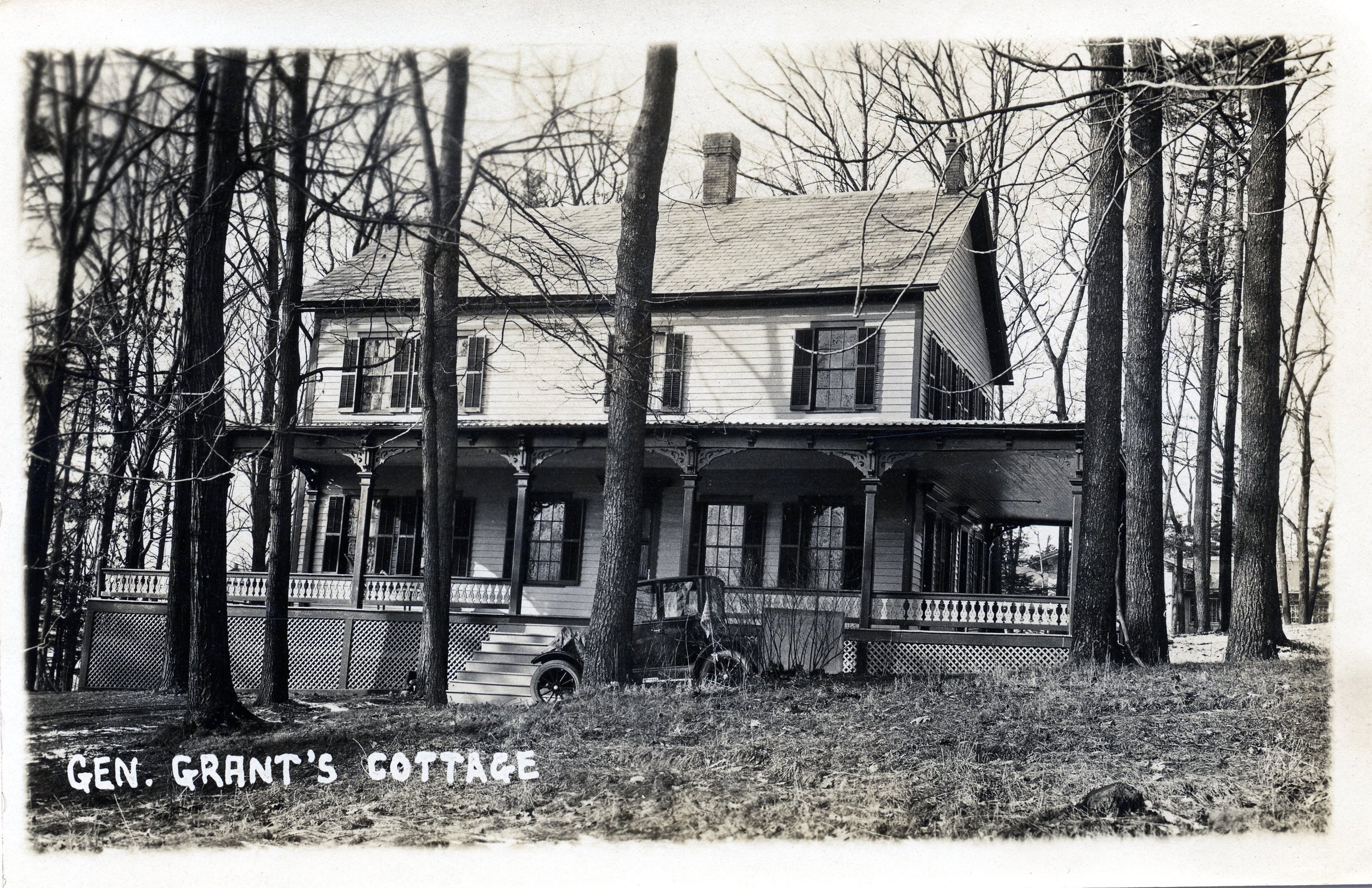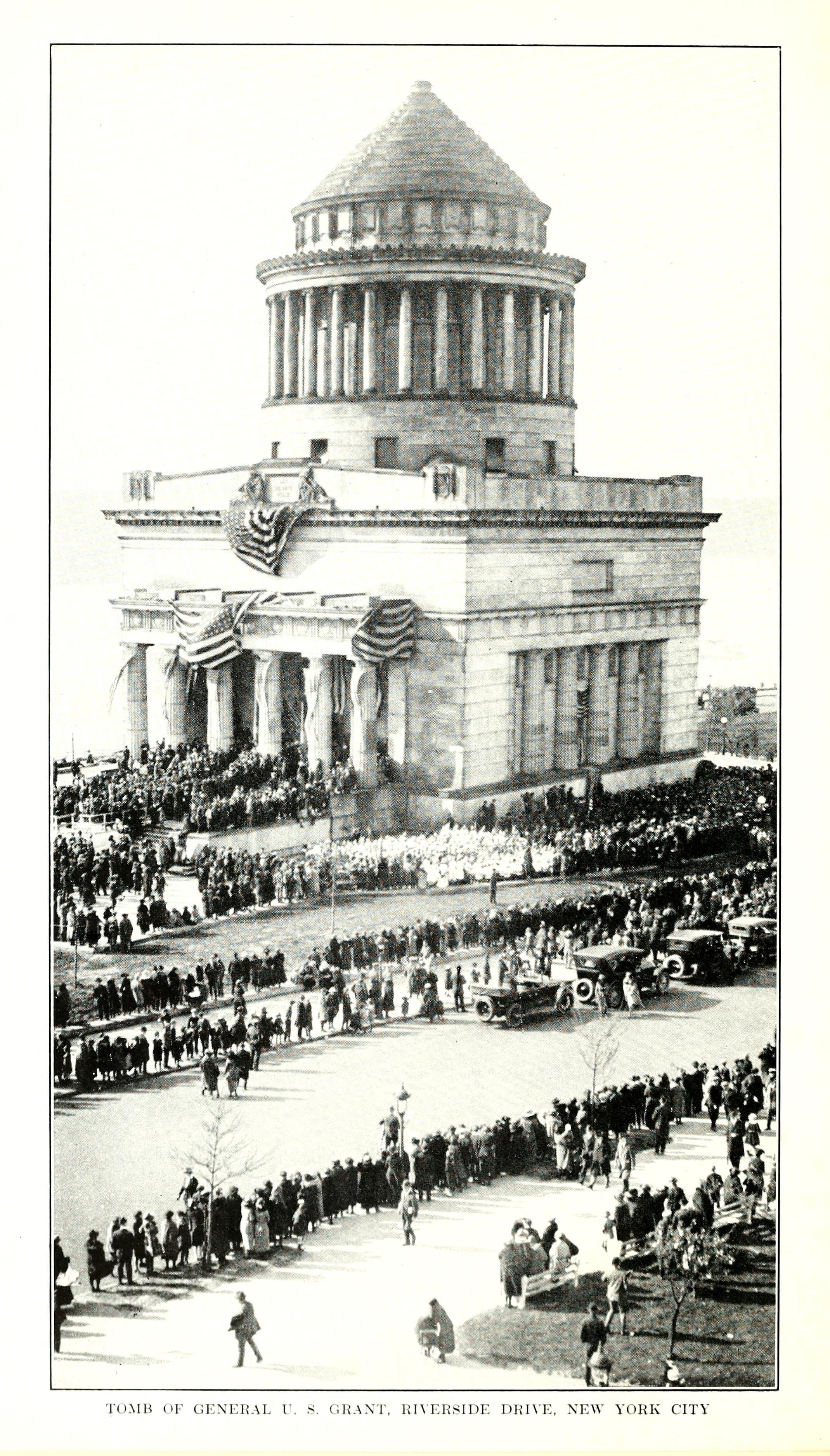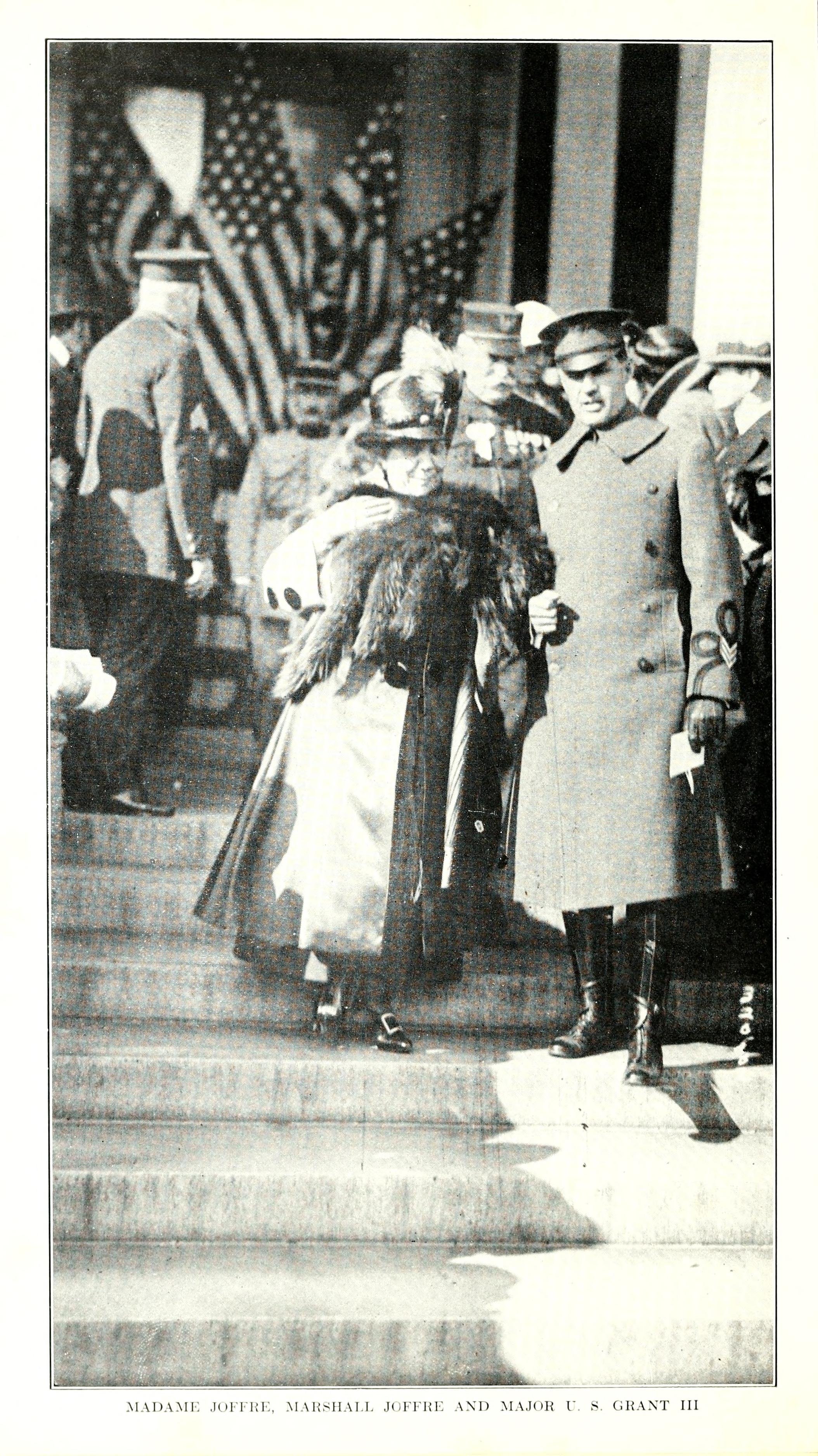As we celebrate the Bicentennial of the birth of Ulysses S. Grant it seems appropriate to take a look back to see how it was observed 100 years ago. In 1922 President Warren Harding issued a proclamation that the centennial of the birth of Ulysses S. Grant be observed nationwide. The way the American public responded to the call showed the reverence toward U.S. Grant that still existed a generation after his death. The Civil War veterans, though dwindling in numbers, played a significant role in making sure General Grant was celebrated. Grant-related sites around the nation also answered the call in various ways.
The Commander in Chief of the Grand Army of the Republic (G.A.R.) Lewis S. Pilcher issued orders to all the posts to appropriately celebrate the centennial of Grant’s birth. In response, posts and their auxiliaries put together commemorative events and printed materials to be distributed in their communities. Throughout the nation mayors made proclamations, military bases held ceremonies and all manner of events were hosted in Grant’s honor.
On Mt. McGregor, New York on April 27, 1922, some of the same individuals that were present 37 years before in the summer of 1885 gathered to pay tribute. They were the final six surviving Civil War veterans of the Wheeler Post of the Grand Army of the Republic (G.A.R.) who had guarded the cottage while Grant’s body lay there after his death. An address was given by local historian and County Surrogate William Ostrander and the Union College Quartet sang.
Robert F. Knapp one of the G.A.R. present at the U.S. Grant Centennial at Grant Cottage, died in 1938 as the last Civil War veteran in the area he lived.
At Grant’s Tomb in New York City an elm tree from the “Grant Farm” (restored by the Busch family) in St. Louis, Missouri was planted under the direction of Charles L. Pack. Pack, a wealthy forester who donated a fortune to forest conservation, would choose a burial location in the Adirondack forest of New York only 25 miles north of Mt. McGregor where General Grant had died. Among those attending the ceremony were members of the Grant G.A.R. Post, the Grant Monument Association, Boy Scouts, school children, and the American Legion. French military hero Marshall Joseph Joffre with his American attache Major U.S. Grant Ill, were guests of honor at the Tomb and then proceeded to New York University’s Hall of Fame to unveil a Grant statue there.
“While the band of the 22nd Regiment, U.S.A., played patriotic airs, and a group of school children sang, the girls, dressed in white and wearing star-spangled liberty caps of brilliant blue, a zooming airplane dropped an olive wreath in front of the tomb, and a detachment of the 104th Field Artillery fired a salute of twenty-one guns in honor of the national hero.”
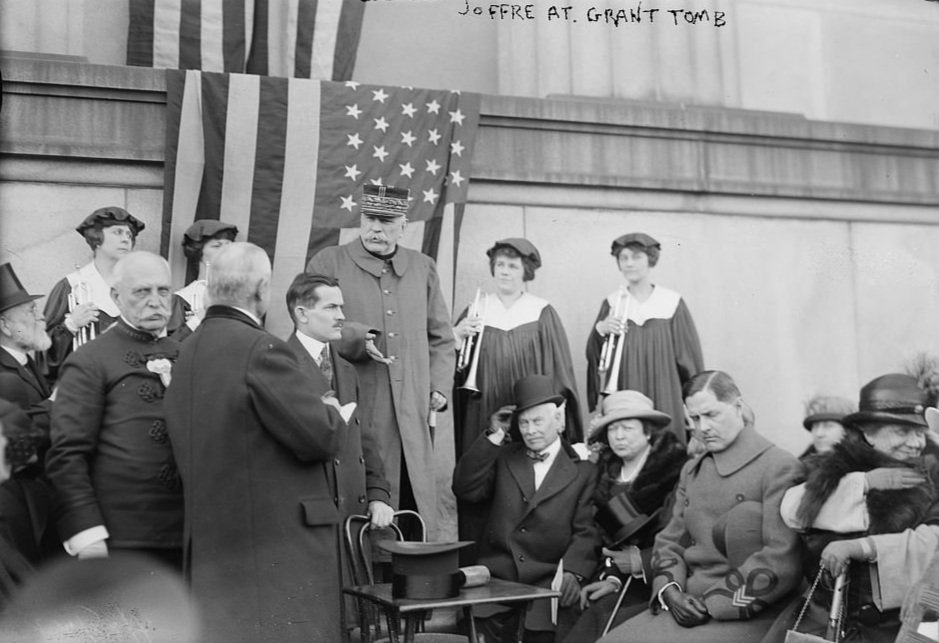
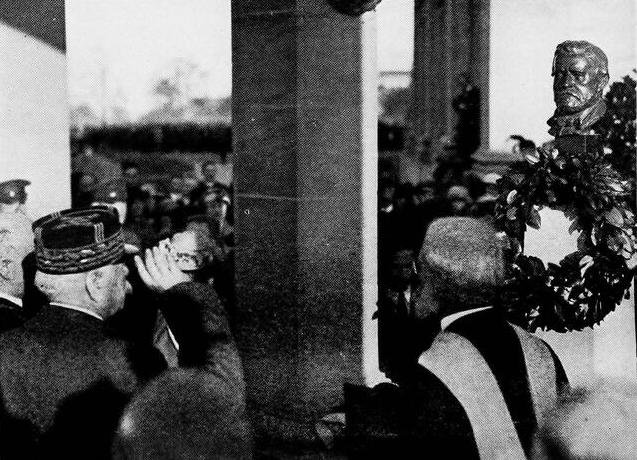
Sculptor Henry Shrady in his studio with his children.
In Washington D.C. an impressive memorial to Grant was dedicated in front of the U.S. Capitol. The monument consisting of an equestrian statue of Grant with various soldiers in battle was designed by Henry Shrady, the son of George Shrady, one of Grant’s physicians during his final illness. Sadly, Henry Shrady would die only weeks before the dedication after devoting two decades to its creation. A parade consisting of West Point cadets, soldiers, veterans of various conflicts and patriotic societies marched from the White House to the Botanical Gardens for the memorial ceremonies. General Grant’s granddaughter Julia Grant Cantacuzene and great-granddaughter Ida Cantacuzene were given the honor of unveiling the monument. Vice President Calvin Coolidge and Secretary of War John W. Weeks gave addresses and with congress adjourned for the day, many prominent government officials were in attendance. The United Confederate Veterans were represented with an address by their commander Julian Carr who presented an American flag to fly over the memorial.
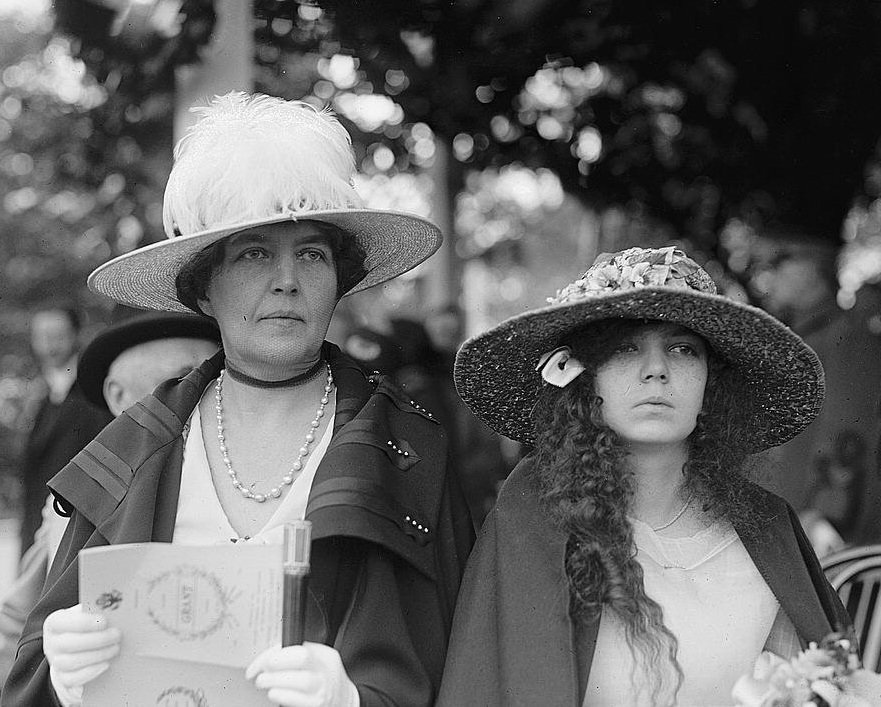
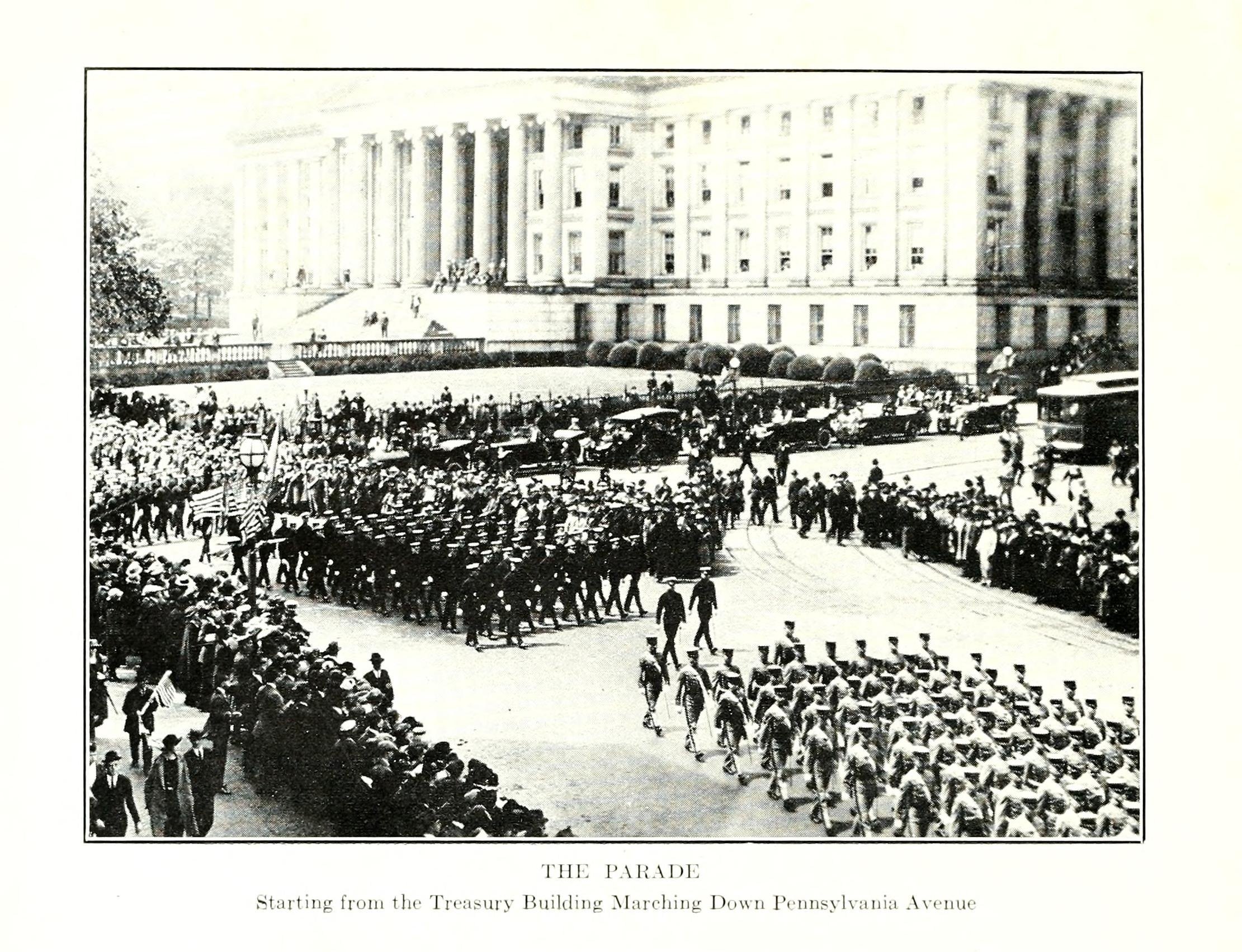

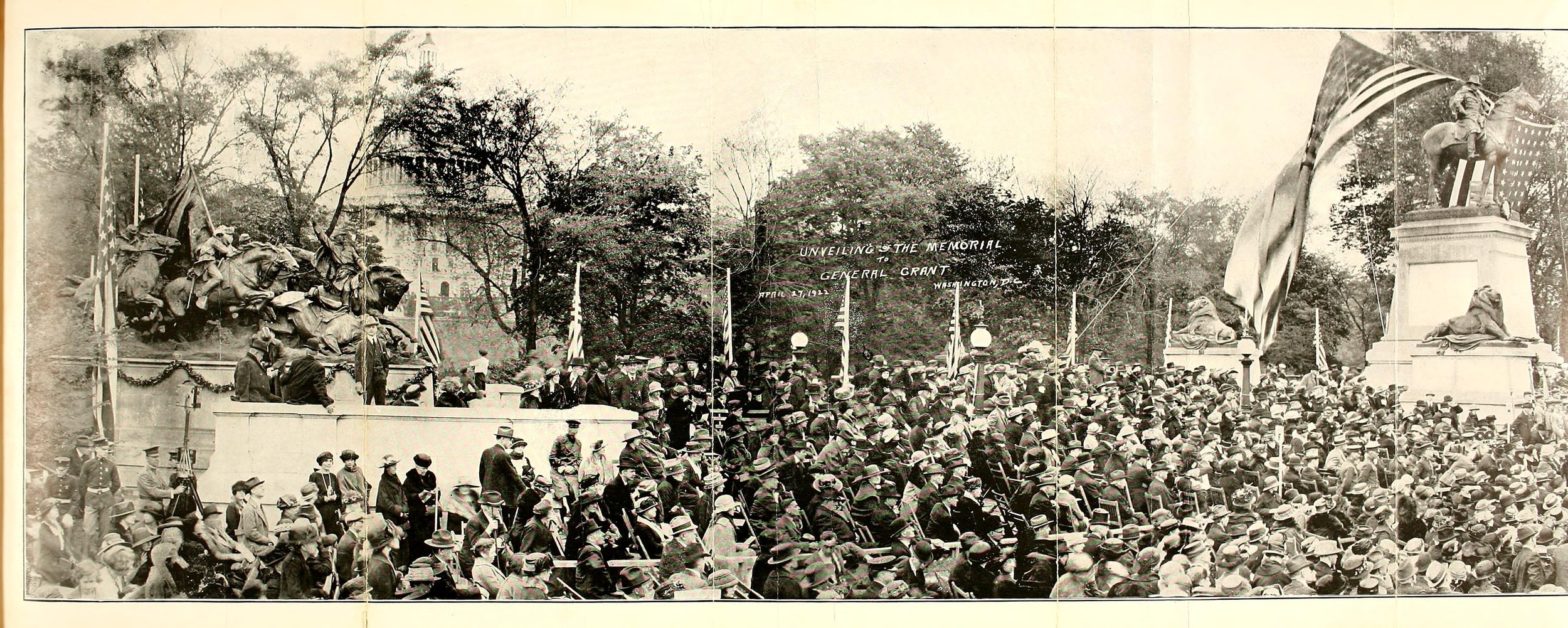
“Our country and the world may well consider the simplicity and directness which marked the greatness of General Grant… Here was a man that lived the great realities of life. As Lincoln could put truth into words, so Grant could put truth into action. How truly he stands out as as a great captain of a republic. Through and through he was genuine… The great republic has raised him a monument not as a symbol of war, but as a symbol of peace. ”
“I ask the privilege of placing this em blem, this silken flag... the emblem of the Land of the Free and the Home of the Brave — upon the bier of this great and victorious leader as a token of the Confederate Soldier’s esteem and respect and love because of his magnanimity in the hour of his great triumph. Here in this distinguished presence, for the Confederate Soldier and in his name, I pledge our lives, our honor, and our all to preserve indestructibly the glorious Union which Ulysses S. Grant won now and forever, one flag and one country. ”
President Harding & Ida Grant
In Point Pleasant, Ohio President Warren Harding gave an address at the birthplace of General Grant. Steamboats transported tens of thousands to hear the President speak using a new amplification apparatus. Mrs. Ida Grant (Frederick Grant’s wife) was in attendance. This was coordinated and a program printed by the U.S. Grant Memorial Centenary Association of the United States. With all the focus on Point Pleasant on April 27th, nearby Georgetown, Ohio, Grant’s boyhood home, and Bethel, Ohio would host their celebrations in the following days.
“[General Grant was] the military hero of the Republic, a commanding figure in the military history of the world, the surpassing example of magnanimity of all times, the most striking example of possibilities of American life, the confident and relentless commander in war, and the modest and sympathetic petitioner of peace after victory.”
The U.S. Mint released a Grant Memorial silver half dollar and gold dollar to commemorate the centennial with a bust of Grant on the obverse and an image of Grant’s birthplace on the reverse. The coinage was designed by early female sculptor Laura Gardin Fraser. Funds from the sale of the coins, 10,000 gold, and 250,000 silver, were intended by the Ulysses S. Grant Centenary Memorial Association to finance the centennial activities and preservation projects at Grant’s birthplace. The endeavor was met with limited success.
Commemorative souvenir items like a medallion by Whitehead & Hoag Co. out of Newark, New Jersey. Books Louis Coolidge’s The Life of Ulysses S. Grant, and other printed materials were published to mark the centennial.
In St. Louis, Missouri various events took place to honor Grant around the city in response to a proclamation by Mayor Henry Kiel. Former scenes of Grant’s life including White Haven and Hardscrabble cabin were visited by many.
“St. Louis claims Grant as its former citizen, because he spent years of his young manhood here, established a home here, and is endeared to many citizens by personal recollections.”
Early speech at Grant Park in Galena, IL
(Source: The City of Galena - Grant Park Commitee)
Galena Illinois celebrated with a parade to Grant Park where an address was given by William R. McCauley, the commander of the Illinois American Legion and later an originator of the 1944 G.I. Bill. A chair that Grant had used was donated to the Grant Memorial home, the brick house that the family had resided in after the Civil War.
At a centennial event in Philadelphia, Pennsylvania the last surviving pallbearer Rabbi Edward “Alphabet” Browne spoke on Grant. Browne had marched the seven miles from City Hall to Riverside Park in New York City during Grant’s 1885 funeral due to it being on the Sabbath.
in Chicago, Illinois parades, speeches and memorial exercises marked the General’s birth. Frank Hatch Jones, Grant’s son-in-law, gave a speech to the Chicago Historical Society. Jones had married Nellie Grant in 1912, but a stroke had left her mostly incapacitated and unable to attend any ceremonies and she passed away in August 1922.
“[Grant’s] qualities of courage, justice, purity, modesty make his example the best I know for the youth of the nation to cultivate. ”
With the nature of celebrations changing over the past century, the 2022 Grant Bicentennial events will not be on the scale of those in 1922. Despite lower attendance and less fanfare, the 2022 celebrations will nevertheless be covered by the press and spread via social media. In an era of renewed interest in Grant, these events will help to further promote the sites that preserve Grant’s legacy and inspire the public to learn more about a pivotal figure in American history.
For more information on Bicentennial events this year visit: https://www.usgrantbicentennial.info/
